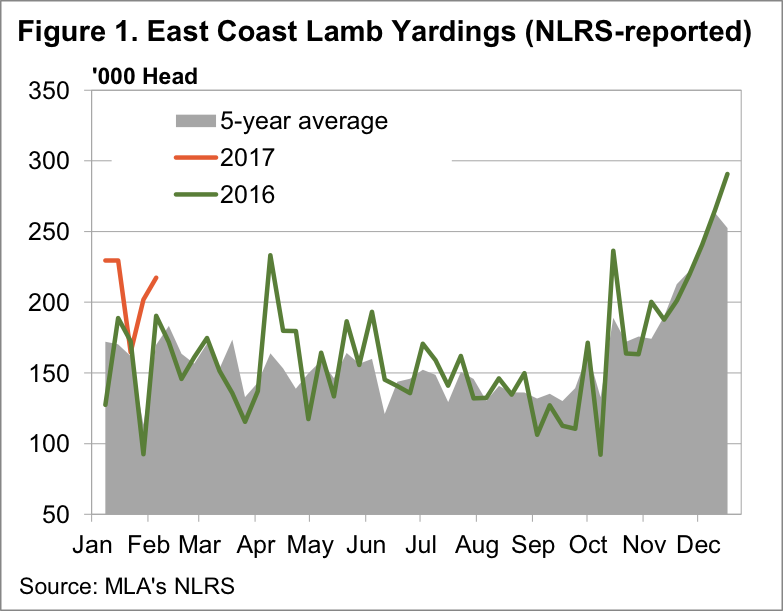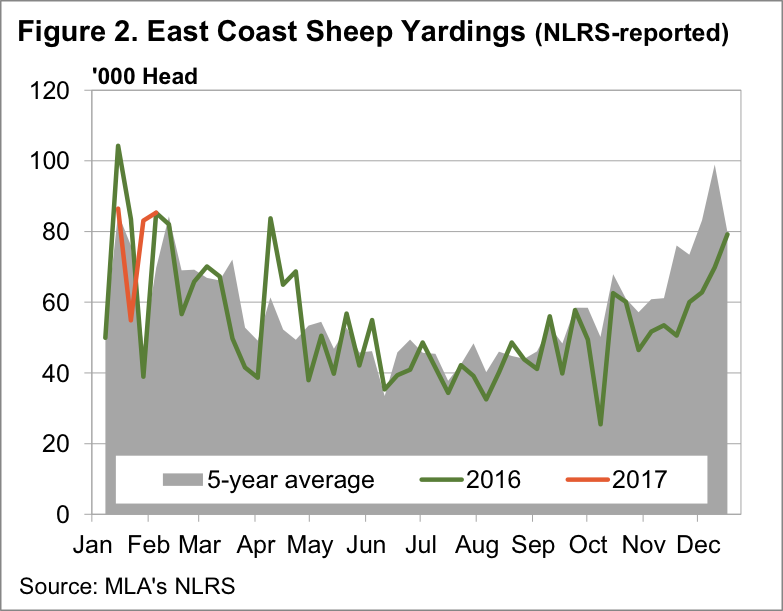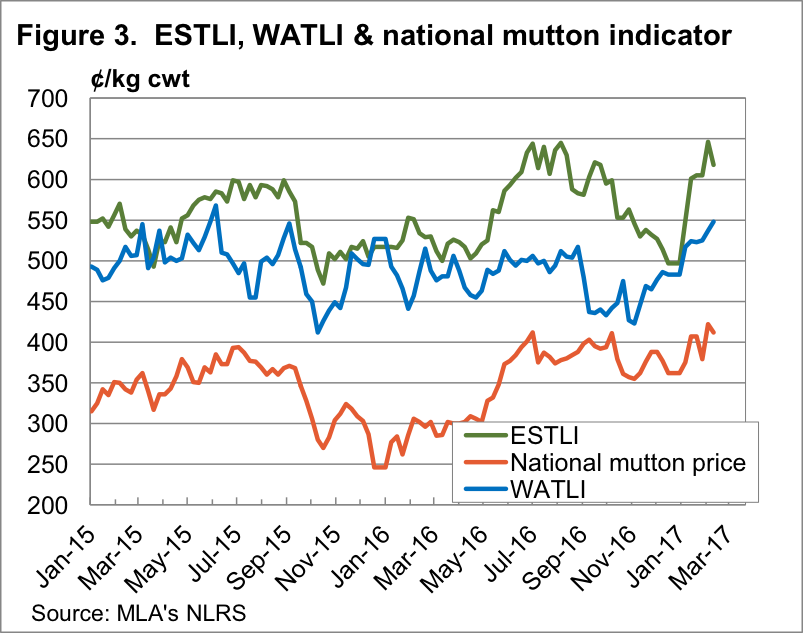Simple economics – Lamb supply up price down

 The very high prices seen last week had the desired effect for processors, drawing out very large lamb numbers, and sending prices lower. Sheep are a bit of a different story, especially in Victoria, where yardings waned, and as such prices have largely held their ground.
The very high prices seen last week had the desired effect for processors, drawing out very large lamb numbers, and sending prices lower. Sheep are a bit of a different story, especially in Victoria, where yardings waned, and as such prices have largely held their ground.
Figure 1 shows East Coast lamb yardings increased by 15,529 head this week or 7.6% to record their highest February weekly yarding in at least 11 years. No doubt the extra high prices of last week led producers to send anything which was ready to market.
The result of the influx of lambs was lamb prices not quite returning to the prices of a fortnight ago. The Eastern States Trade Lamb Indicator (ESTLI) fell 28¢ this week to sit at 618¢/kg cwt, still a very solid level.  The fall was strongest in Victoria, where trade lambs lost 45¢, or 7%, and moved back into line with NSW and SA.
The fall was strongest in Victoria, where trade lambs lost 45¢, or 7%, and moved back into line with NSW and SA.
Mutton yardings only managed a marginal rally, increasing 4.8% to sit at almost exactly the same level as last year. Mutton prices reacted to an extent, falling less than 10¢ in NSW (404¢) and Victoria (444¢), but increasing 13¢ in SA to 402¢/kg cwt.
 In WA lamb prices continued to play catch up to the east coast, with the WA Trade Lamb Indicator (WATLI) hitting a 19 month high of 548¢/kg cwt (figure 3).
In WA lamb prices continued to play catch up to the east coast, with the WA Trade Lamb Indicator (WATLI) hitting a 19 month high of 548¢/kg cwt (figure 3).
Lamb yardings in the West were up by 62%, with rising prices an indication that export demand is possibly increasing. This improves the prospects for sustaining current strong prices over the coming months.
The week ahead
The south west of WA is set for some very strong rainfall in the coming week, which could see the continuation of rallying prices there. In the east the question is whether this week was the start of a run of lambs, or whether the strong prices pulled out all that is ready. If it is the former prices will continue to ease, if it’s the latter we might see another spike, or at least prices tracking sideways.


